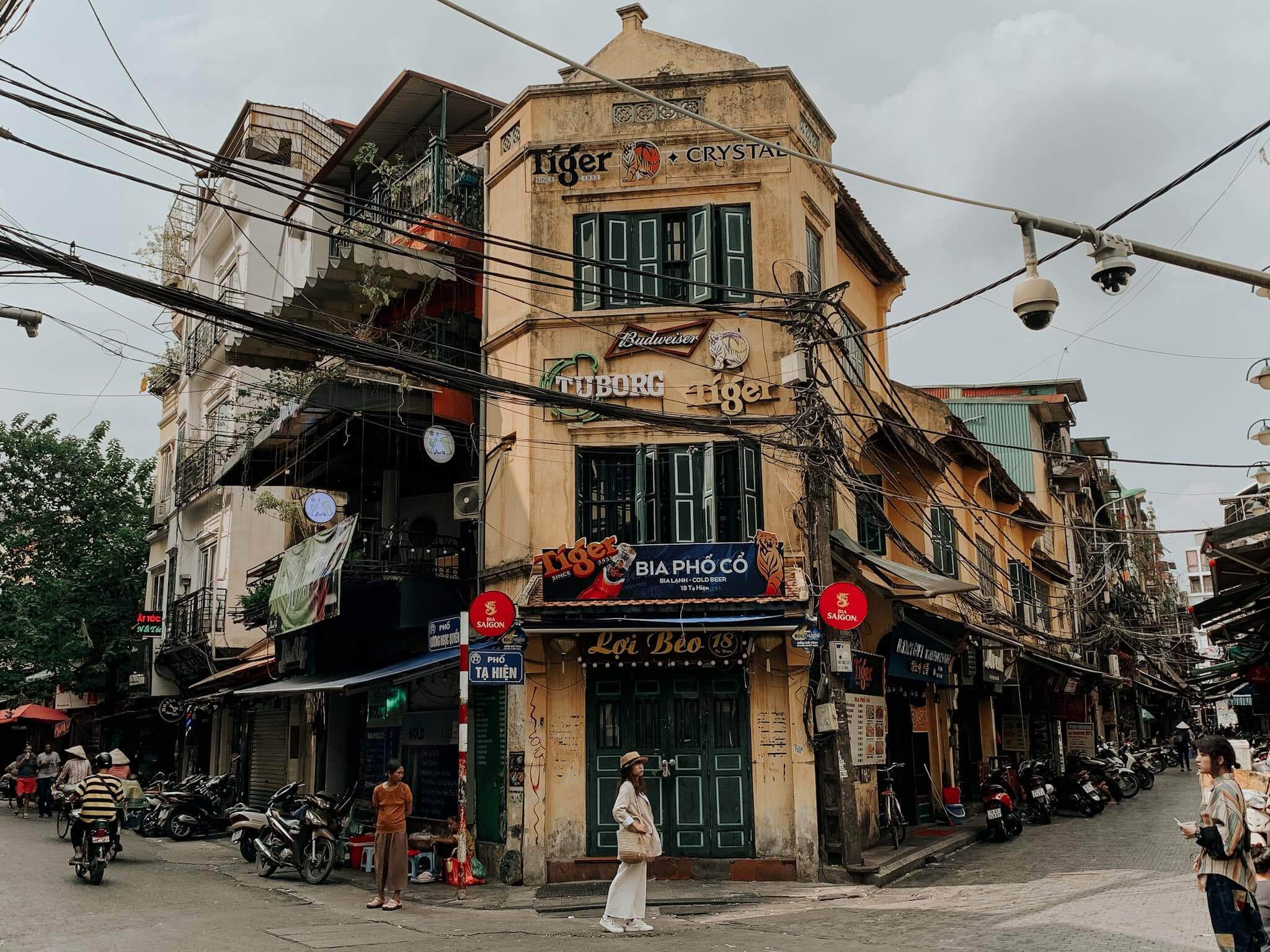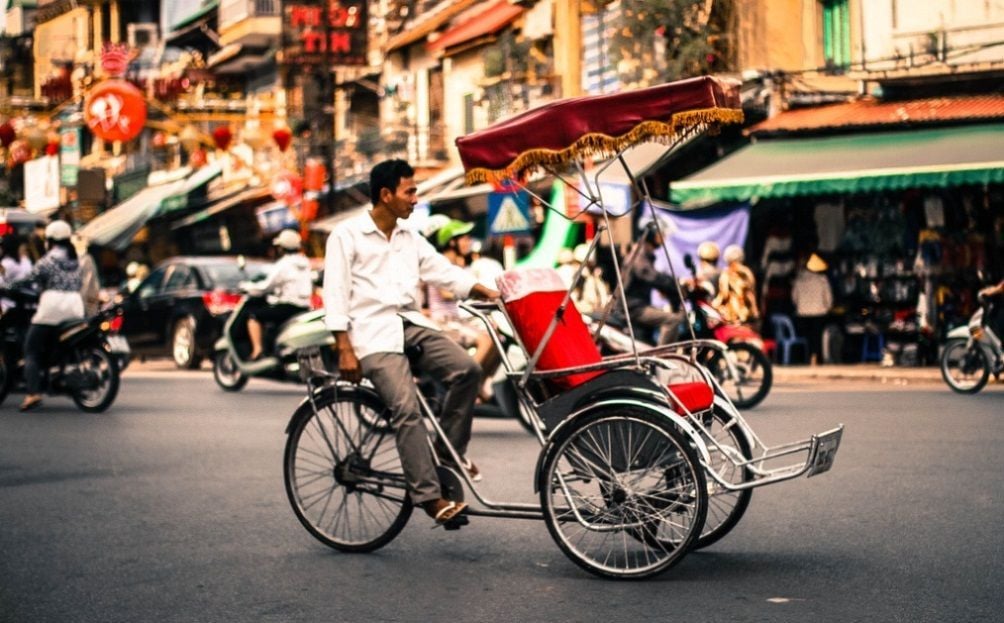Learn about the history, culture, and attractions of Hanoi Old Quarter, and find out the best ways to explore and enjoy this charming area.
TABLE OF CONTENTS
1
1. Hanoi Old Quarter - Living museum of Vietnam's past and present
2
2. How did Hanoi Old Quarter originate and develop?
3
3. What are the cultural and historical attractions in the Old Quarter?
4
Hang Bac Street: This is one of the oldest and most famous streets in the Old Quarter. Its name means "Silver Street" because it used to be where silversmiths and jewelers worked and sold their products. It was also where the first Vietnamese coins were minted. Today, it is still a popular place for buying jewelry, as well as money exchange and backpacker hostels.
5
Hang Ma Street: This is another old and famous street in the Old Quarter. Its name means "Paper Street" because it used to be where paper products, such as votive offerings, lanterns, masks, and decorations, were made and sold. It is especially colorful and lively during festivals and holidays, such as Tet, Mid-Autumn Festival, and Halloween.
6
Hang Gai Street: This is a street that is known for its silk products, such as clothes, scarves, bags, and accessories. It used to be where tailors and seamstresses worked and sold their products. It is also where you can find some of the oldest and most prestigious silk shops in Hanoi, such as Khai Silk and Tan My.
7
Hang Dao Street: This is a street that is known for its clothing products, such as shirts, pants, dresses, shoes, and accessories. It used to be where dyers and embroiderers worked and sold their products. It is also where you can find Dong Xuan Market, the largest market in Hanoi, which sells a variety of goods at cheap prices.
8
Hang Quat Street: This is a street that is known for its religious products, such as altars, incense burners, statues, paintings, and brass items. It used to be where fan makers worked and sold their products. It is also where you can find some of the oldest temples in the Old Quarter, such as Bach Ma Temple and Quan De Temple.
9
10
4. What are the best ways to explore and enjoy the Old Quarter as a tourist?

Have you ever wondered what it would be like to travel back in time and experience the history and culture of Vietnam? If so, you should visit Hanoi Old Quarter, an intriguing neighborhood in the heart of the capital city. Here, you can find a mix of Vietnamese architecture, green spaces, ancient shops and fresh-as-it-gets street food. But what makes Hanoi Old Quarter so special and why should you care?

1. Hanoi Old Quarter - Living museum of Vietnam's past and present
Hanoi Old Quarter is not just a tourist attraction, but a living museum of Vietnam's past and present. It is the oldest continuously developed area of Vietnam, with a history that spans 2,000 years and represents the eternal soul of the city. From a snake and alligator-infested swamp to a cluster of villages on stilts to a bustling trade center with 36 streets named after the crafts or products sold there, Hanoi Old Quarter has witnessed many changes and transformations over time. It has also been a cultural and religious hub, with many pagodas built by ancient traders, and a political and historical stage, where many events such as the French occupation, the Japanese invasion, the American bombing and the Vietnamese reunification took place.
Today, Hanoi Old Quarter faces many challenges, such as traffic congestion, pollution, urbanization and gentrification. However, it also has many opportunities, such as tourism development, cultural preservation and community empowerment. Hanoi Old Quarter is a place where you can learn about Vietnam's rich heritage, enjoy its vibrant street life and discover its hidden gems. It is a place where you can feel the pulse of the city and connect with its people. It is a place where you can find yourself in the midst of history and culture.

2. How did Hanoi Old Quarter originate and develop?
Hanoi Old Quarter is a reflection of Vietnam’s storied past. Its history dates back to the 11th-century when, after independence from China, Emperor Ly Thai To decided to move the capital from Hoa Lu, Ninh Binh to Hanoi. This decision attracted many craftsmen and traders to the area, who organized themselves into craft cooperatives and guilds. The Old Quarter was located east of the Imperial Citadel of Thang Long and along the Red River, which was convenient for trading and commerce. The Old Quarter was divided into 36 streets or guilds, each specialized in one specific type of product or service, such as silver, paper, sugar, salt, etc. The streets were named after their main products, such as Hang Bac (Silver Street), Hang Ma (Paper Street), etc.
The Old Quarter was originally a swampy area that was gradually filled up by sand and soil over time. It was also prone to flooding by the Red River and its tributaries, which shaped its landscape and architecture. The Old Quarter witnessed many historical events and cultural influences throughout its history, such as the Mongol invasions, the Tay Son rebellion, the French colonization, the August Revolution, the Vietnam War, and the Doi Moi reforms. The Old Quarter has undergone many changes and renovations over time, such as the construction of new buildings, bridges, roads, and public facilities. Some of these changes have been controversial and have sparked debates over the preservation of its heritage and identity.
The Old Quarter is home to many intangible cultural heritages, such as folk music, festivals, rituals, crafts, cuisine, and customs. Some of these heritages have been recognized by UNESCO, such as ca tru singing, quan ho singing, and the Giong festival. The Old Quarter is still the commercial heart of Hanoi today, with many shops, restaurants, cafes, bars, and entertainment venues. It also preserves its historical and cultural heritage, with many temples, museums, old houses, and traditional crafts.
The Old Quarter is a must-visit for anyone looking for an unforgettable experience in Hanoi. It offers a seamless fusion between old, proudly-preserved culture and continuously diversifying the city. It is the oldest yet busiest commercial district and one of the top attractions of Vietnam’s capital.

3. What are the cultural and historical attractions in the Old Quarter?
-
Hang Bac Street: This is one of the oldest and most famous streets in the Old Quarter. Its name means "Silver Street" because it used to be where silversmiths and jewelers worked and sold their products. It was also where the first Vietnamese coins were minted. Today, it is still a popular place for buying jewelry, as well as money exchange and backpacker hostels.
-
Hang Ma Street: This is another old and famous street in the Old Quarter. Its name means "Paper Street" because it used to be where paper products, such as votive offerings, lanterns, masks, and decorations, were made and sold. It is especially colorful and lively during festivals and holidays, such as Tet, Mid-Autumn Festival, and Halloween.
-
Hang Gai Street: This is a street that is known for its silk products, such as clothes, scarves, bags, and accessories. It used to be where tailors and seamstresses worked and sold their products. It is also where you can find some of the oldest and most prestigious silk shops in Hanoi, such as Khai Silk and Tan My.
-
Hang Dao Street: This is a street that is known for its clothing products, such as shirts, pants, dresses, shoes, and accessories. It used to be where dyers and embroiderers worked and sold their products. It is also where you can find Dong Xuan Market, the largest market in Hanoi, which sells a variety of goods at cheap prices.
-
Hang Quat Street: This is a street that is known for its religious products, such as altars, incense burners, statues, paintings, and brass items. It used to be where fan makers worked and sold their products. It is also where you can find some of the oldest temples in the Old Quarter, such as Bach Ma Temple and Quan De Temple.
4. What are the best ways to explore and enjoy the Old Quarter as a tourist?
There are many ways to explore and enjoy the Old Quarter as a tourist, depending on your preferences and interests. Here are some of them:
- By cyclo: This is a traditional three-wheeled bicycle taxi that can take you around the Old Quarter at a leisurely pace. You can sit back and enjoy the views, learn about the history and culture of the area, and take some photos along the way. You can hire a cyclo for an hour or more, or join a guided tour that includes some stops at attractions.
- By walking: This is a great way to immerse yourself in the atmosphere and charm of the Old Quarter. You can wander around the streets, admire the architecture, visit the temples and museums, shop for souvenirs, taste the street food, and interact with the locals. You can follow a map or a guidebook, or join a free walking tour that is led by volunteers.
- By water puppet show: This is a unique Vietnamese art form that originated from the wet-rice culture. You can watch a performance at the Thang Long Water Puppet Theater, where wooden puppets dance over the water and tell folk tales with music and firecrackers. You can learn about the legends and traditions of Vietnam, as well as enjoy the entertainment and humor of the show.
- By coffee: This is a popular drink and culture in Hanoi, especially in the Old Quarter. You can try different types of coffee, such as egg coffee, coconut coffee, yogurt coffee, or weasel coffee. You can also visit some of the oldest and most famous coffee shops in Hanoi, such as Giang Cafe, Dinh Cafe, or Lam Cafe. You can enjoy the aroma and flavor of the coffee, as well as the ambiance and history of the places.
- By nightlife: This is a fun way to experience the energy and excitement of the Old Quarter after dark. You can drink bia hoi (local beer) at Ta Hien Street, which is also known as Beer Street. You can mingle with the locals and other travelers, chat, play games, or listen to music. You can also visit some of the bars and clubs in the area, such as The Rockstore, Polite Pub, or Funky Buddha.

Hanoi Old Quarter is a captivating and lively area that showcases the rich and diverse heritage of Vietnam's capital. It is a place where you can explore the ancient streets and temples, savor the mouth watering street food and coffee, shop for unique souvenirs and handicrafts, watch a traditional water puppet show or join the fun nightlife. Hanoi Old Quarter is an essential destination for anyone who wants to experience the authentic and charming Hanoi.
If you are interested in visiting the Old Quarter and other attractions in Hanoi and Vietnam, Threeland Travel can help you plan your perfect trip. Whether you want to discover the culture, nature, history, or adventure of Vietnam, we can make your dream come true. Contact Threeland Travel today and get ready for an unforgettable journey in Vietnam.
Read more:











